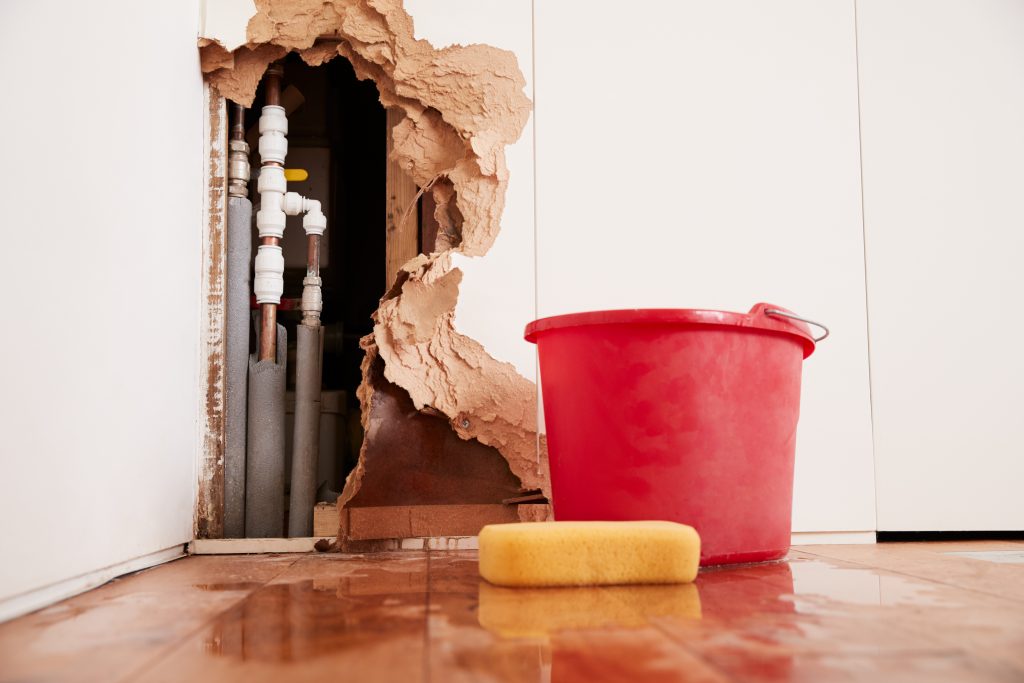How to Inspect If Your Residence Has a Concealed Leakage
How to Inspect If Your Residence Has a Concealed Leakage
Blog Article
We have unearthed this post relating to Hacks to detect leaks below on the web and concluded it made good sense to relate it with you over here.

Early discovery of leaking water lines can minimize a prospective catastrophe. Some small water leaks might not be visible.
1. Analyze the Water Meter
Every residence has a water meter. Checking it is a guaranteed manner in which aids you uncover leakages. For beginners, shut off all the water sources. Ensure no one will flush, make use of the tap, shower, run the washing device or dish washer. From there, most likely to the meter and watch if it will change. Because nobody is utilizing it, there must be no motions. If it relocates, that suggests a fast-moving leakage. Also, if you discover no changes, wait a hr or more and also check back once again. This means you might have a slow leak that might even be underground.
2. Check Water Usage
Analyze your water costs and also track your water usage. As the one paying it, you need to see if there are any type of discrepancies. If you spot sudden changes, in spite of your usage coinciding, it suggests that you have leakages in your plumbing system. Remember, your water costs should drop under the exact same range every month. A sudden spike in your costs indicates a fast-moving leakage.
On the other hand, a steady rise monthly, even with the same habits, reveals you have a slow-moving leakage that's also gradually rising. Call a plumber to thoroughly check your building, particularly if you feel a cozy area on your floor with piping below.
3. Do a Food Coloring Test
30% comes from toilets when it comes to water intake. Test to see if they are running correctly. Drop specks of food shade in the tank and also wait 10 minutes. If the shade somehow infiltrates your bowl during that time without flushing, there's a leakage between the tank as well as dish.
4. Asses Exterior Lines
Don't neglect to inspect your exterior water lines too. Test spigots by affixing a garden pipe. Should water seep out of the connection, you have a loose rubber gasket. Replace this as well as make certain all links are tight. If you have actually obtained an automatic sprinkler, it will aid get it properly analyzed and kept yearly. One little leak can lose tons of water as well as surge your water costs.
5. Evaluate the situation as well as evaluate
Home owners must make it a routine to check under the sink counters and also also inside closets for any bad odor or mold development. These two warnings indicate a leakage so prompt interest is required. Doing routine examinations, even bi-annually, can save you from a significant trouble.
If you know your house is already old, keep a watchful eye on your heating units, tubes, pipelines and so on. Look for stainings and deteriorating as the majority of pipes and home appliances have a life expectancy. They will also normally weaken because of tear as well as wear. Do not wait for it to rise if you think leaking water lines in your plumbing system. Call a specialist plumber right away so you do not end up with a terrible mess in your house.
Early discovery of dripping water lines can alleviate a potential calamity. Some small water leakages might not be visible. Examining it is a proven method that aids you uncover leakages. One small leak can squander tons of water and also surge your water expense.
If you suspect dripping water lines in your plumbing system, do not wait for it to intensify.
WARNING SIGNS OF WATER LEAKAGE BEHIND THE WALL
PERSISTENT MUSTY ODORS
As water slowly drips from a leaky pipe inside the wall, flooring and sheetrock stay damp and develop an odor similar to wet cardboard. It generates a musty smell that can help you find hidden leaks.
MOLD IN UNUSUAL AREAS
Mold usually grows in wet areas like kitchens, baths and laundry rooms. If you spot the stuff on walls or baseboards in other rooms of the house, it’s a good indicator of undetected water leaks.
STAINS THAT GROW
When mold thrives around a leaky pipe, it sometimes takes hold on the inside surface of the affected wall. A growing stain on otherwise clean sheetrock is often your sign of a hidden plumbing problem.
PEELING OR BUBBLING WALLPAPER / PAINT
This clue is easy to miss in rooms that don’t get much use. When you see wallpaper separating along seams or paint bubbling or flaking off the wall, blame sheetrock that stays wet because of an undetected leak.
BUCKLED CEILINGS AND STAINED FLOORS
If ceilings or floors in bathrooms, kitchens or laundry areas develop structural problems, don’t rule out constant damp inside the walls. Wet sheetrock can affect adjacent framing, flooring and ceilings.
https://www.servicemasterbyzaba.com/blog/how-to-detect-water-leakage-in-walls/

I have been very enthusiastic about Top leak detection hacks and I really hope you appreciated the blog post. Enjoyed reading our write up? Please share it. Help someone else find it. We appreciate reading our article about Hacks to detect leaks.
Report this page